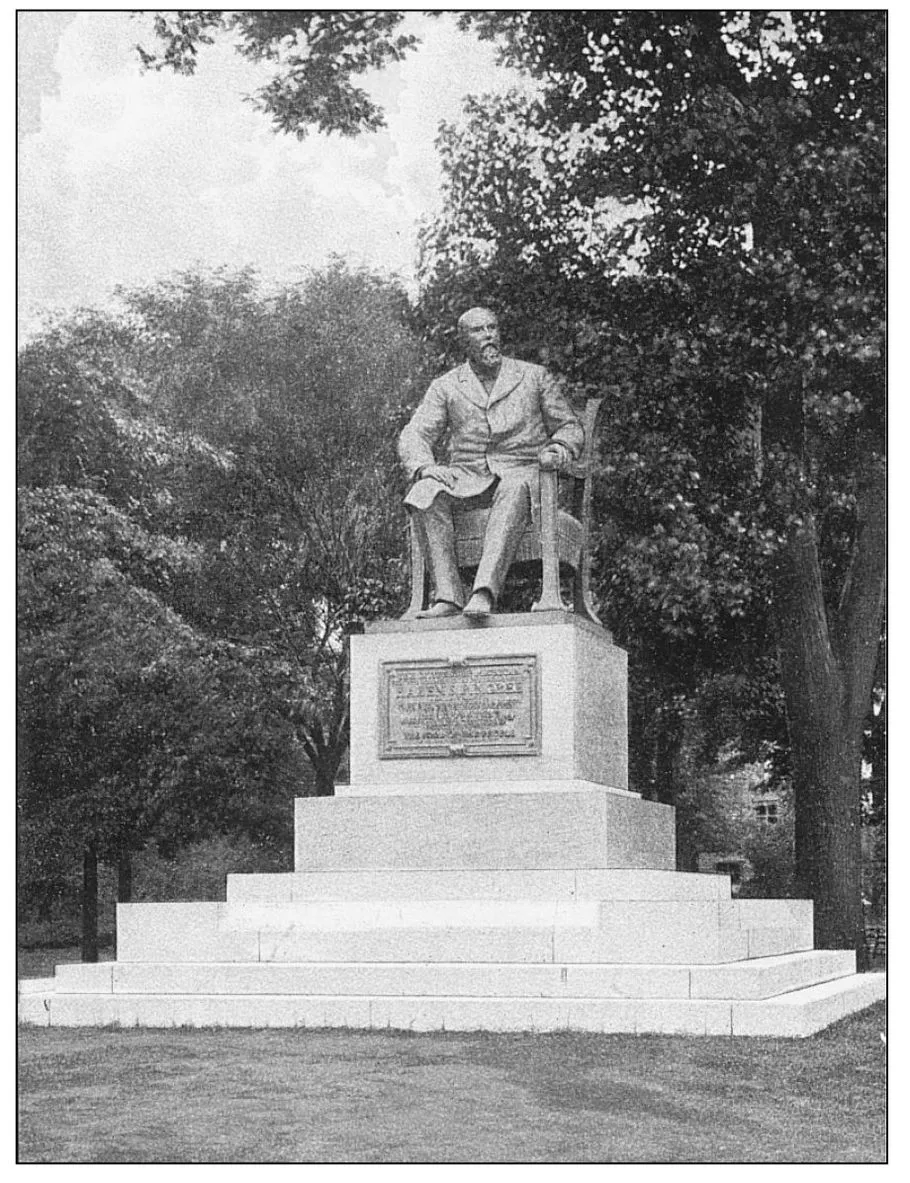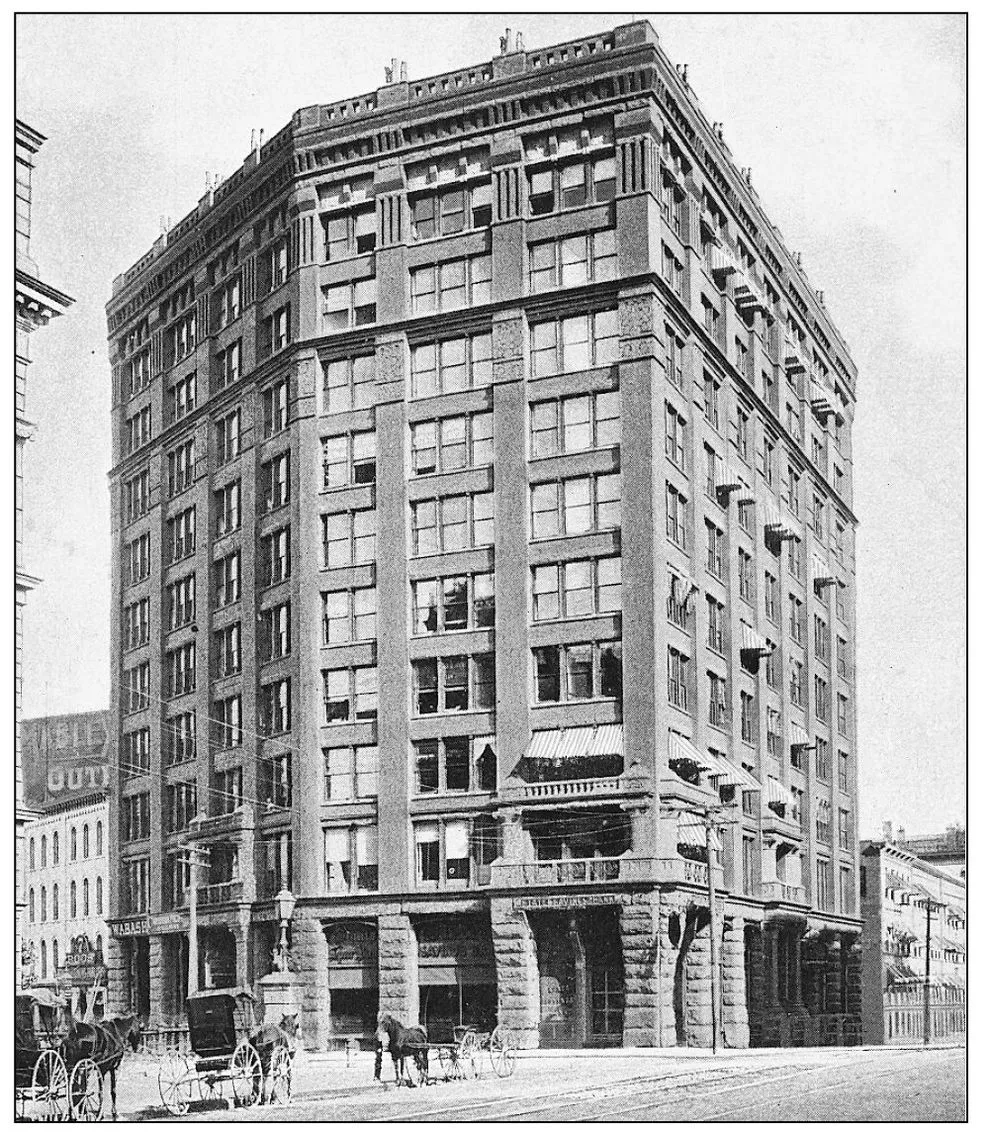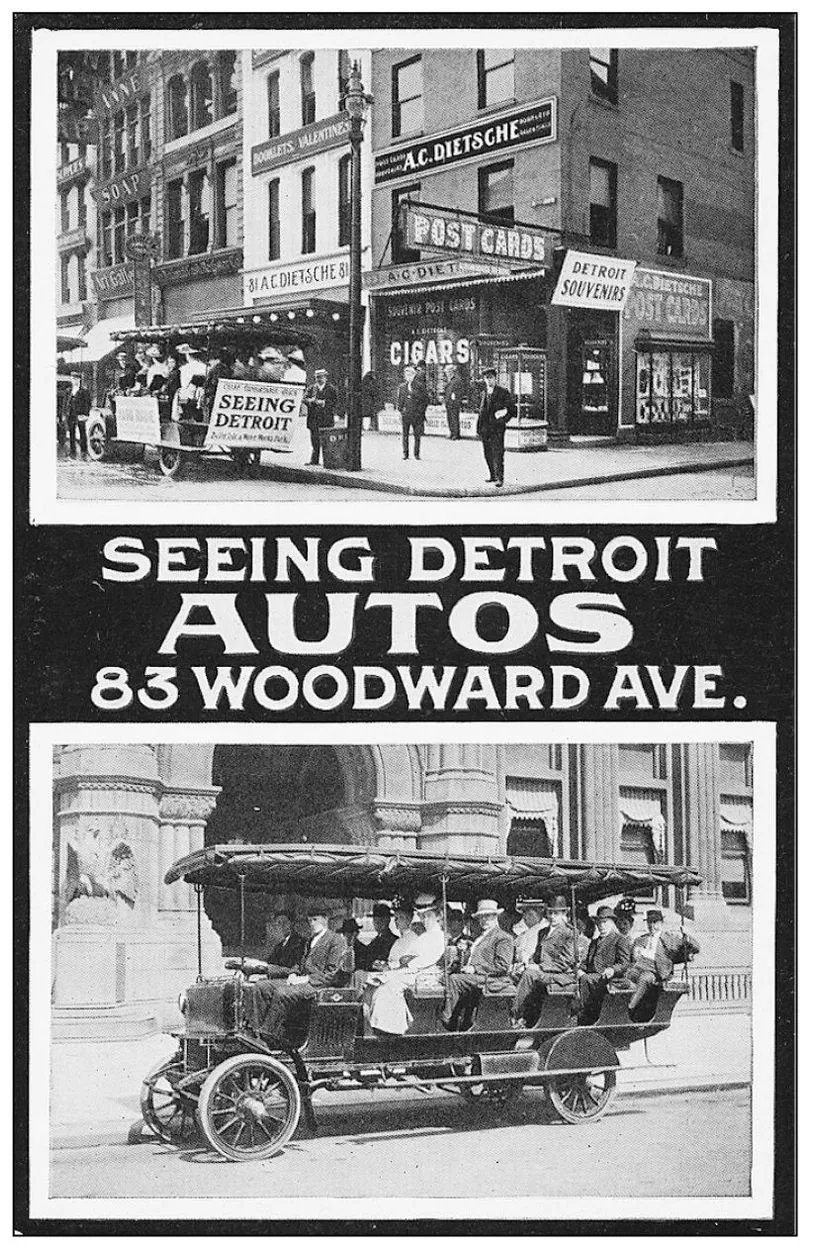
eBook - ePub
Detroit
A Postcard History
Richard Bak
This is a test
Compartir libro
- 128 páginas
- English
- ePUB (apto para móviles)
- Disponible en iOS y Android
eBook - ePub
Detroit
A Postcard History
Richard Bak
Detalles del libro
Vista previa del libro
Índice
Citas
Información del libro
View evocative and historical images in postcards from the early days of Detroit.
Postcard photographers traveled the length and breadth of the nation snapping photographs of busy street scenes, documenting local landmarks, and assembling crowds of neighborhood children only too happy to pose for a picture. These images, printed as postcards and sold in general stores across the country, survive as telling reminders of an important era in America's history.
Preguntas frecuentes
¿Cómo cancelo mi suscripción?
¿Cómo descargo los libros?
Por el momento, todos nuestros libros ePub adaptables a dispositivos móviles se pueden descargar a través de la aplicación. La mayor parte de nuestros PDF también se puede descargar y ya estamos trabajando para que el resto también sea descargable. Obtén más información aquí.
¿En qué se diferencian los planes de precios?
Ambos planes te permiten acceder por completo a la biblioteca y a todas las funciones de Perlego. Las únicas diferencias son el precio y el período de suscripción: con el plan anual ahorrarás en torno a un 30 % en comparación con 12 meses de un plan mensual.
¿Qué es Perlego?
Somos un servicio de suscripción de libros de texto en línea que te permite acceder a toda una biblioteca en línea por menos de lo que cuesta un libro al mes. Con más de un millón de libros sobre más de 1000 categorías, ¡tenemos todo lo que necesitas! Obtén más información aquí.
¿Perlego ofrece la función de texto a voz?
Busca el símbolo de lectura en voz alta en tu próximo libro para ver si puedes escucharlo. La herramienta de lectura en voz alta lee el texto en voz alta por ti, resaltando el texto a medida que se lee. Puedes pausarla, acelerarla y ralentizarla. Obtén más información aquí.
¿Es Detroit un PDF/ePUB en línea?
Sí, puedes acceder a Detroit de Richard Bak en formato PDF o ePUB, así como a otros libros populares de History y North American History. Tenemos más de un millón de libros disponibles en nuestro catálogo para que explores.
Información
Categoría
HistoryCategoría
North American HistoryTwo
AROUND THE TOWN

THE HUB OF DETROIT. In 1807, two years after a disastrous fire destroyed Detroit, territorial magistrate Augustus B. Woodward designed a spoked street layout for the rebuilt city. Only a portion of his grandiose vision was realized, including Campus Martius (pronounced MARSH-ess), originally a park on lower Woodward Avenue at which Woodward Avenue, Michigan Avenue, and Monroe Street presently intersect. The Latin name means “military park” and refers to the Campus Martius of ancient Rome, an area used for military drills.

WOODWARD AVENUE, C. 1904. Detroit’s main street, which begins at the Detroit River and extends northward toward Pontiac, was named for Judge Woodward. By the late 19th century the former toll road had become a grand avenue of fashionable homes and stately churches, though unimpeded commercial growth continued to push residents farther north of the city center. By the 1920s, the soot, noise, and congestion brought on by the emerging metropolis had irreversibly changed Woodward Avenue’s character.

GRAND CIRCUS PARK. Integral to Judge Woodward’s vision were regularly spaced public spaces known as “circuses,” designed to provide sylvan respites for city dwellers. Ultimately most of Woodward’s baroque plan was abandoned or scaled back. However, a remnant, Grand Circus Park at the intersection of Woodward and Adams Avenues, was set aside by the city in 1854. Its shade trees have since helped cool generations of Detroiters.

POTATO PATCH PINGREE. Grand Circus Park contains one of the city’s most familiar landmarks, the statue of former mayor Hazen Pingree. The progressive Pingree, who served from 1890 to 1896 before resigning to become governor, gained national renown for turning vacant plots of land into vegetable gardens for the needy. The statue was dedicated on Memorial Day 1904, three years after “Potato Patch Pingree” died unexpectedly in England.

A BLOOMING BOAST. One of the more eye-pleasing aspects of Grand Circus Park during the warm-weather months was watching the message, “In Detroit Life Is Worth Living,” blossom in its giant flower bed. Few disputed the boast as the city continued to grow in population and prestige through the 1920s.

CAPITOL SQUARE PARK, C. 1909. This pie-sliced piece of greenery north of State and Griswold Streets originally was the site of Michigan’s territorial capitol, which in 1863 was converted into Detroit’s first high school. A fire destroyed the building in 1893, after which the land became a park. In 1905 the body of Michigan’s first state governor, Stevens T. Mason, was laid to rest there. A statue was dedicated in 1908.

DETROIT’S FIRST SKYSCRAPER. The 11-story Hammond Building at the southeast corner of Griswold and Fort Streets was considered a “wonder of the world.” Originally conceived by George Hammond, who’d made his fortune building refrigerated railroad cars, and completed by his widow after his death, the $750,000 skyscraper was one of the largest masonry structures in the country when opened in 1890. To celebrate, a high-wire performer walked a cable from its roof to a tower of nearby city hall.

A TALL ORDER. Merchant king Christopher R. Mabley had only one order when designing his own skyscraper at Michigan and Woodward Avenues: “Never mind the expense, but be sure it’s higher than the Hammond Building.” Like Hammond, Mabley died before his dream was completed in 1896. The new owners, not wanting to waste the initial “M” placed on the capstone and hundreds of doorknobs, named the 14-story structure the Majestic Building. It was demolished in 1961, five years after the Hammond Building.

SELLING DETROIT. A.C. Dietsche, located at 83 Woodward Avenue, offered sightseeing tours, postcards, souvenirs, and practically anything else of interest to the out-of-town visitor, back in the days when Detroit was a major tourist destination.

GUIDED TOURS. Sightseeing buses gave visitors a quick, restful, and i...